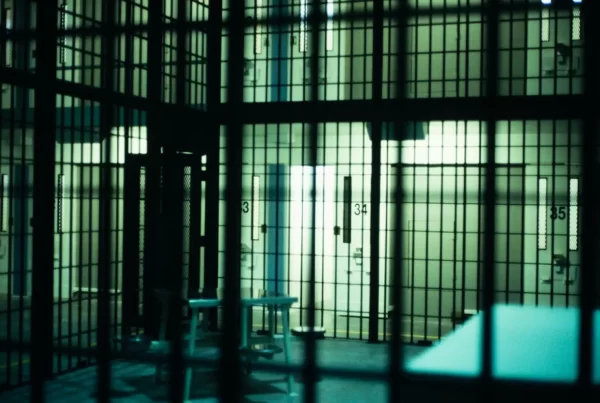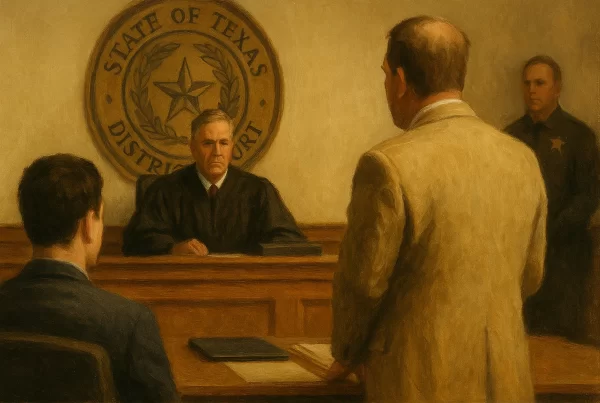The Texas Penal Code is a collection of the criminal laws of the State of Texas, defining various crimes and the corresponding penalties for committing them. The Penal Code is one of 28 codes, or books, of Texas laws, which are enacted by the Legislature.
The penal code contains most, but not all, of the criminal laws of Texas; certain crimes are codified in the Transportation Code, the Controlled Substances Act of the Health and Safety Code, and other codes. Additionally, Texas cities enact their own local criminal ordinances, which define minor criminal penalties.
An official version of the Texas Penal Code is available online from the state legislature. In print, Vernon’s Texas Statutes and Codes Annotated is considered the official version of the laws.
Persons accused of crimes under the Penal Code are entitled to trial in a court of law. They are presumed innocent until proven guilty.
Major Crimes in Texas
The Texas Penal Code defines various acts that constitute felony offenses, including homicide, kidnapping, smuggling of persons, aggravated assault, sexual assault, arson, and burglary.
Some felony crimes involve acts of official corruption, including bribery and retaliation against a public servant or employee for performing official duties or reporting a criminal offense.
Texas also criminalizes the possession of certain narcotics, including marijuana, heroin, cocaine, and methamphetamine. Possession of these drugs can be a felony offense, as is dealing them. Penalties depend on both the type and quantity of the drug. Possession of small amounts of marijuana is usually treated as a misdemeanor, while larger quantities—or any amount of harder drugs—are typically felonies.
Misdemeanors vs Felonies
Compared to felonies, misdemeanors are less serious offenses. Misdemeanor offenses include trespassing, public lewdness, indecent exposure, making a false report to a peace officer, prostitution, reckless driving, improper influence, obstruction, and harassment.
Assault can fall on either side of the line. A simple assault—causing minor bodily injury, threatening someone with harm, or making offensive physical contact—is usually a Class A misdemeanor. However, if the assault involves serious bodily injury, the use of a deadly weapon, or if it’s committed against certain protected persons (such as public servants or elderly individuals), it becomes an aggravated assault, which is a felony—typically second- or third-degree, depending on the circumstances.
Theft and fraud are also typically misdemeanor offenses, though they can be classified as a felony if the amount in question is greater than $2,500. Likewise, the classification of DWI offenses (drunk driving) depends on the facts of the case, such as whether there was a child in the vehicle, and whether it was a repeat offense. A first offense is generally a Class B misdemeanor, but certain factors—such as prior convictions, high blood alcohol content, or causing injury—can elevate it to a felony.
Misdemeanor offenders are typically released on bond or serve time in county jail, whereas felony offenders can be sentenced to time in state prison. Misdemeanor sentences are capped at one year in county jail, while felony sentences start at two years in state prison and can extend to life, depending on the degree of the offense.
Punishments in the Penal Code
The Penal Code classifies criminal offenses according to their relative seriousness:
- Class A misdemeanors: punishable by a fine not to exceed $4,000, confinement in jail for a term not to exceed one year, or both fine and confinement.
- Class B misdemeanors: punishable by a fine not to exceed $2,000, confinement in jail for a term not to exceed 180 days, or both fine and confinement.
- Class C misdemeanors: punishable by a fine not to exceed $500.
- Capital felonies: punished by death, or imprisonment in state prison for life without parole, except that juvenile offenders are subject to life imprisonment with parole eligibility rather than death.
- 1st-degree felonies: punishable by imprisonment in state prison for 5 to 99 years, or for life.
- 2nd-degree felonies: punishable by imprisonment in state prison for 2 to 20 years.
- 3rd-degree felonies: punishable by imprisonment in state prison for 2 to 10 years.
- State jail felonies: punishable by imprisonment in a state jail facility for 180 days to 2 years.
This article is provided for general informational and educational purposes only and does not constitute legal advice. The laws and procedures discussed herein reflect Texas statutes and legal norms as of the time of writing and may be subject to change. Individuals facing arrest or criminal charges should consult a licensed attorney for guidance specific to their situation. Texapedia is a privately maintained encyclopedia and does not provide legal representation or services.



